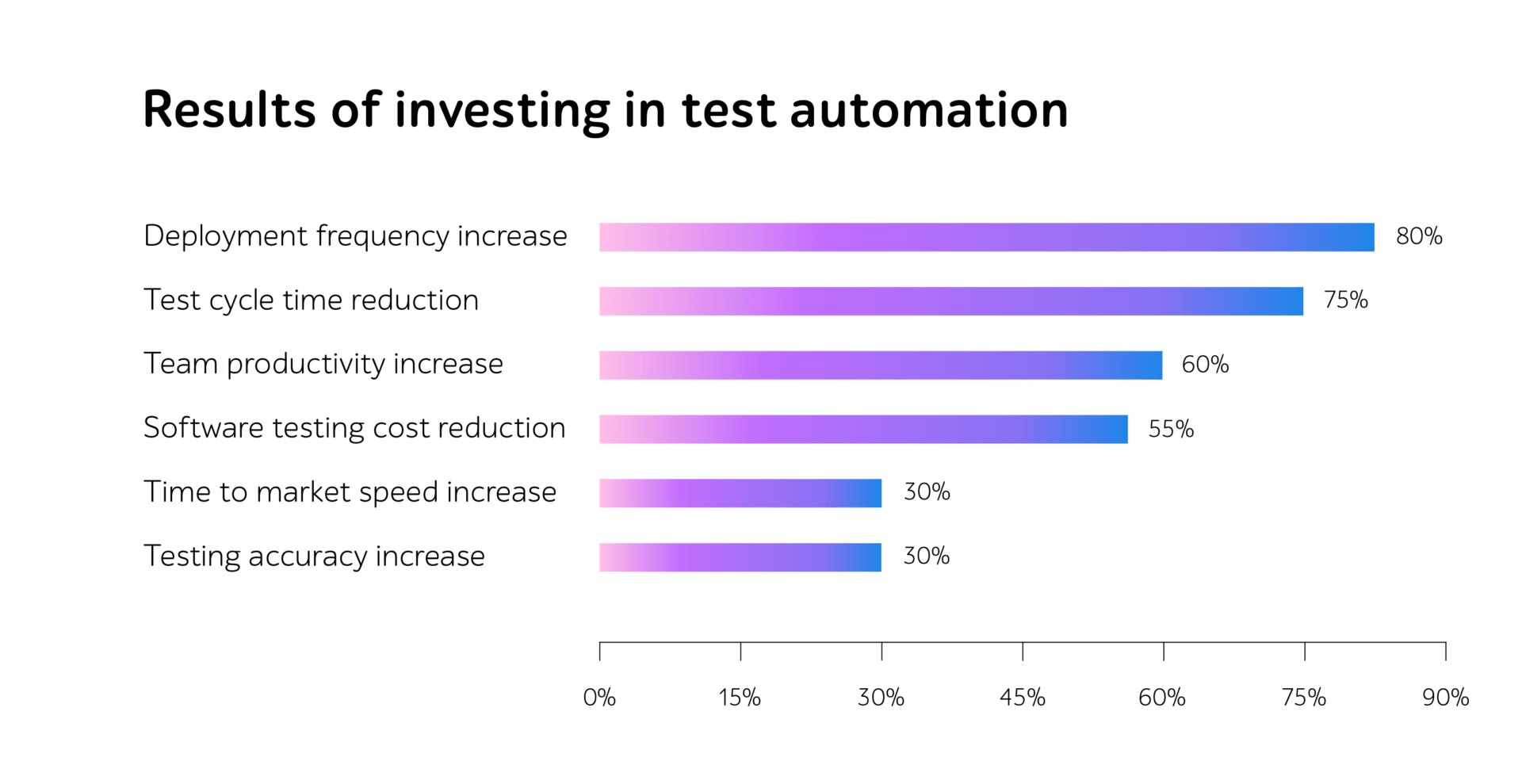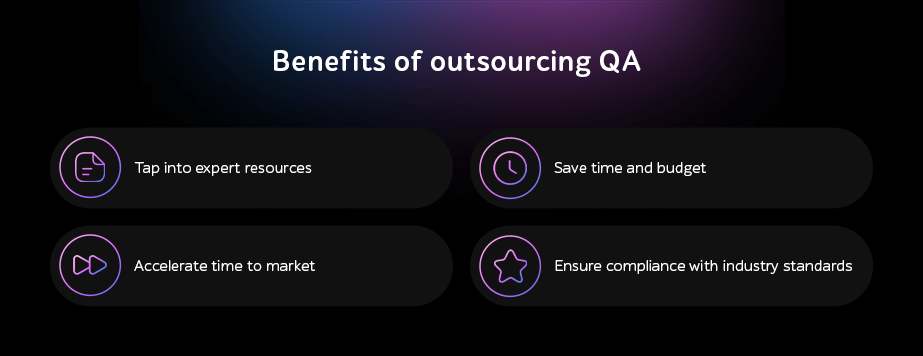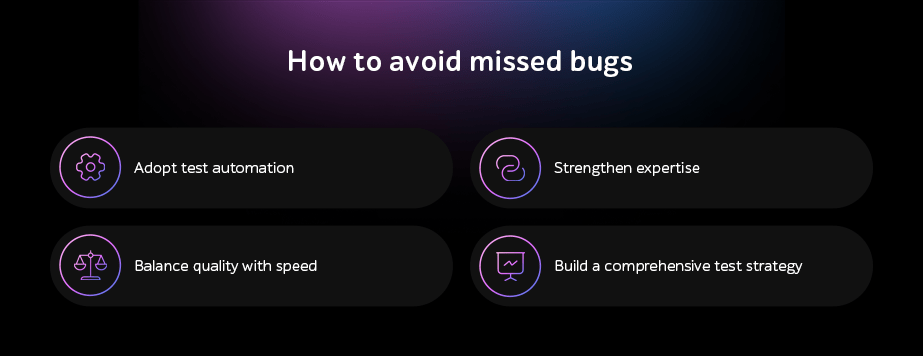
Why do bugs get missed? Learn the problems and tips to avoid them
In early 2023, T-Mobile experienced a significant data breach that impacted 37 million customers. Hackers accessed personal information, including names, addresses, phone numbers, and emails. This breach highlighted the dangers of overlooked security vulnerabilities and the importance of strong cybersecurity measures to protect user data.
According to the 2022 “Cost of Poor Software Quality in the US” report, software failures cost US companies $2.41 trillion in 2022, a significant increase from previous years. These failures result in not only financial losses but also higher expenses for defect fixing and the risk of customers moving to competitors.
However, what are the reasons behind the overlooked bugs from the QA side? Let’s reveal them in the article and share the ways to fix them.
Problem #1: Lack of test automation
Manual testing remains a key component of any project, but it often falls short when speed, frequency, and consistency are critical. While manual testing can be effective in some cases, it becomes less feasible for larger, more complex projects due to budget and time limitations.
In such cases, efficient test coverage is difficult to achieve, leading to an increased likelihood of missed defects. Under tight deadlines, the time-consuming nature of manual tests can further slow development, exacerbating the risk of overlooked issues as teams may sacrifice some tests to meet deadlines.
How to fix it?
Test automation can address many of these challenges. According to the World Metrics Test Automation Report, 70% of companies are now investing in automation tools and services, which help identify defects up to 20 times faster than manual testing.
Automation can also cut test cycle time by up to 75% and boost team productivity by 60%. Furthermore, 83% of organizations report improved test coverage through automation, leading to better software quality and faster product releases.

Source: World Metrics Test Automation Report 2024
Problem #2: Deadlines, speed, and costs put before software quality
Consider a scenario where a company aims to release a new version of its eCommerce app for Black Friday and Cyber Monday. Due to tight deadlines, the team decides to skip critical testing phases, thinking, “What could possibly go wrong?” The app crashes under the influx of visitors, leading to significant revenue loss. This illustrates how skipping even certain types of testing, such as performance testing, to save time and money can backfire, resulting in even greater financial losses and damage to a company’s reputation.
How to fix it?
Delivering quality at speed is a key requirement for most enterprises. Companies must strike a balance between tight deadlines and maintaining high software quality. Here’s how:
- Ensuring enough flexibility
Flexible methodologies, like Agile, help shorten development cycles, ensuring software updates are verified early and swiftly delivered to the market. Agile also enables companies to adapt to ever-changing customer demands and modify project requirements effectively. According to the 17th State of Agile Report, 71% of surveyed organizations indicated that Agile improved their ability to manage changing priorities, and 64% reported that Agile accelerated software delivery.
Furthermore, 42% saw improvements in software quality, and 35% cut QA costs by adopting DevOps. By ensuring this flexibility, companies can avoid compromising software quality while meeting tight deadlines.
- Shifting to CI/CD
How about detecting bugs in real time and fixing them as they occur? You don’t have to wait and put defect verification away until the last stage. All this is feasible by implementing continuous integration and continuous delivery (CI/CD) within a test automation strategy.
The software undergoes changes and updates during its entire lifecycle, and CI/CD facilitates ongoing testing, deployment, and delivery. And all this happens without sacrificing quality ― isn’t that a dream?
- Introducing parallel testing
Let’s look at another example. The deadline is tight, but there is a strong need to test the application across multiple devices and browsers. Not having time, you test only on the latest Google Chrome versions. This is how many bugs are missed!
If you run the tests sequentially, it does take time. However, there is a solution: parallel testing, which allows you to run the same tests simultaneously in different environments. Meanwhile, the QA team can focus its resources on other mission-critical tasks.
Problem #3: Lack of required specialists, skills and expertise
Having an in-house QA team is beneficial, but is your team large enough to handle the demands of a large-scale project? More importantly, do they have the necessary skills in areas beyond basic functionality, such as performance testing, cybersecurity, and compliance?
Additionally, having domain knowledge and experience in similar systems is crucial. When testers are familiar with the systems they are testing, they better understand the processes and patterns, resulting in more comprehensive tests and fewer missed defects.
Consider a scenario where a company has only two QA specialists, both focused solely on functionality. As a result, critical issues might be missed — like the 2022 Ticketmaster failure, where the platform crashed under the strain of high demand. Similarly, without cybersecurity expertise, vulnerabilities could go unnoticed, leading to breaches like the 2023 Latitude Financial data leak, where millions of personal records were compromised and millions of dollars were lost by the company.
If your team lacks specialists in performance and security testing, these types of defects can easily be overlooked, resulting in major consequences for user experience, company reputation, and compliance with data protection regulations.
How to fix it?
- Outsourcing software testing
To avoid budget overruns, cut QA costs, and find a perfectly suitable QA team, companies increasingly turn to QA outsourcing, which is projected to grow from $342.6 billion in 2023 to $770.98 billion by 2032, driven by the demand for scalable and efficient IT infrastructure.
When to onboard extra QA experts? Let’s see 5 common cases:
- If you look for an effective and flexible team. Outsourced QA specialists are quick to incorporate into your infrastructure, adjust to any request, and easily scale up or down when needed.
- If you want to save time and budget. Independent experts fine-tune QA processes at the very beginning of a project, which facilitates easy and cost-effective defect detection and fixing in the early development stages.
- If you strive to accelerate time to market. A dedicated QA team designs the most optimal QA strategy, which helps speed up the workflows and release the IT product faster.
- If you need to ensure safety standards compliance. An unbiased assessment by offshore professionals allows not only the detection of system minor, major, and hidden defects but also assuring the agreement with all relevant global protocols, such as HIPAA, FDA, OWASP, etc.
- If you need specialized knowledge and proven testing experience. Bringing in external QA experts means you get a team of skilled testers who understand the specific requirements of your software. They are experienced in similar projects, allowing them to begin testing effectively from day one. Their industry know-how ensures that they quickly identify potential issues, providing immediate results and high-quality outcomes.

- Onboarding the right in-house team
Since technologies are constantly evolving, QA experts should keep track of the IT environment and topical trends. This helps implement software testing approaches (e.g., shift-left and continuous testing) and methodologies (e.g., Agile and DevOps) as well as apply best practices to solve QA-related challenges of any complexity.
Don’t forget about the time management skills of your team members — this is what guarantees that the work is going according to plan, assists in meeting deadlines, and ensures that quality gates are met.
Even if your team is staffed with QA gurus, ongoing training is still a critical step that involves running specialized seminars and obtaining proficiency in new QA areas.

Problem #4: Lack of testing strategy and plan
A common issue in QA is the absence of a structured testing strategy, which not only leads to gaps in test coverage but also makes it difficult to predict what types of tests, resources, and test data will be needed during testing — resulting in missed bugs. Without a well-defined plan, ensuring full test coverage becomes challenging, increasing the risk of defects making it to production. Additionally, this lack of strategy often leads to missed deadlines, and as deadlines approach, critical test types may be omitted, further contributing to missed bugs.
Solution: Implementing a comprehensive test strategy
A comprehensive test strategy is developed according to the goals of the project and the required workload, addressing business issues, scope, deliverables, metrics, and risks.
It’s also good to have a test model that outlines all system functionalities and user behaviors, ensuring that no key areas are overlooked. During this process, roles and responsibilities across the team, communication methods, a reporting plan, and the client’s expectations are clearly defined. This structured approach helps create test cases that thoroughly cover all the necessary parts of the system.
To optimize test coverage and ensure all functionalities are properly tested, apply various test design techniques, such as:
- Equivalence class partitioning.
- Boundary value analysis.
- State transition testing.
- Pairwise testing.
These techniques enable us to optimize test coverage, ensuring that all critical areas are adequately tested without missing any key functionality or behavior.

Bottom line
Missed defects can cause major issues for product owners, developers, and QA teams, but they can be avoided by focusing on key approaches.
Test automation enhances coverage, speeds up processes, and reduces errors, while modern methodologies like Agile, CI/CD, and parallel testing enable faster and more flexible cycles. A skilled QA team — whether in-house or outsourced — supported by efficient processes and the right tools, is crucial. An effective QA strategy that outlines roles, communication, and ensures comprehensive testing of critical scenarios is essential for delivering quality outcomes.
You can achieve this by either hiring skilled personnel, investing in your internal processes and tools, or outsourcing to experts who already have established practices in place. These approaches collectively reduce missed bugs and ensure high-quality software.
If you want to ensure high quality within your IT products, turn to a1qa’s experts and get professional QA support.








